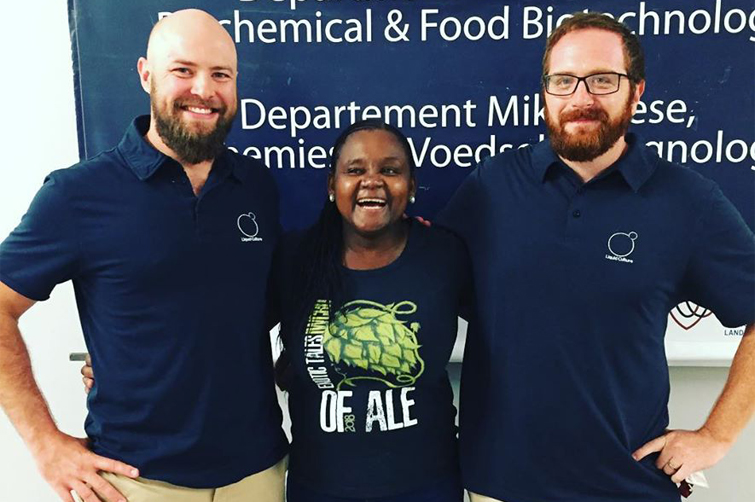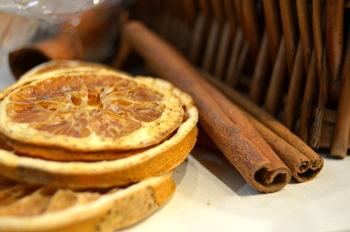Latest News Archive
Please select Category, Year, and then Month to display items
27 December 2019
|
Story Dr Cindé Greyling
|
Photo Supplied

KovsieInnovation at the UFS is bridging the gap between industry and academics with a powerful force. For too long, research remained an academic pursuit, with many innovative ideas stuck between the pages of a thesis – only to come alive during exclusive, short-lived conference proceeds.
KovsieInnovation
Recently, Gerard Verhoef, Director in the Directorate: Research Development (DRD), and his team from KovsieInnovation finalised their Innovation and Commercialisation Strategy in order to create a structured pathway for good ideas. The primary objective of KovsieInnovation – the UFS Innovation and Entrepreneurship Office – is to achieve sustainable growth in third-stream income from innovative research activities stemming from the UFS. “Potential successful ideas must be feasible, viable, and sustainable, and we formulated an eight-step plan to facilitate this,” Verhoef explains. Ultimately, the DRD wants to attract new and continuous research as a renowned academic knowledge partner that can foster, drive, and successfully commercialise innovative research activities; and in doing so, foster an entrepreneurial culture at the UFS.
Liquid Culture
One such success story is the development of Liquid Culture into a business of choice, supplying liquid yeast to breweries and bakeries. Christopher Rothmann and Dr Errol Cason are the driving forces behind this company that produces their sought-after and stable yeast product in the Department of Microbiology, Biochemistry and Food Biotechnology at the UFS. With world-class equipment and laboratories, they house one of the largest yeast-culture collections in the world.
Both Rothman and Dr Cason were home brewers for many years before starting to produce commercial batches. They believe it would not have been possible without the help of KovsieInnovation. This project was also one of the finalists in the National Entrepreneurship Intervarsity.
Christo Strydom Nutrition (CSN)
Another innovative way in which the UFS generates third-stream income via the DRD, is by partnering with already successful commercial products. One such example is the recent successful royalty agreement with CSN. With this transaction, the university unlocked its brand potential to the benefit of both the industry partner and the UFS. Quality assurance remains the key success factor for deals like this.
UFS researchers are producing various flavour and fragrance compounds
2015-05-27
 |
The minty-fresh smell after brushing your teeth, the buttery flavour on your popcorn and your vanilla-scented candles - these are mostly flavour and fragrance compounds produced synthetically in a laboratory and the result of many decades of research.
This research, in the end, is what will be important to reproduce these fragrances synthetically for use in the food and cosmetic industries.
Prof Martie Smit, Academic Head of the Department of Microbial, Biochemical and Food Biotechnology at the UFS, and her colleague Dr Dirk Opperman, currently have a team of postgraduate students working on the production of various flavour and fragrance compounds from cheap and abundantly available natural raw materials.
Prof Smit explains that most of the flavours and fragrances that we smell every day, originally come from natural compounds produced mainly by plants.
“However, because these compounds are often produced in very low concentrations by plants, many of these compounds are today replaced with synthetically-manufactured versions. In recent times, there is an increasing negative view among consumers of such synthetic flavour and fragrance compounds.”
On the other hand, aroma chemicals produced by biotechnological methods, are defined as natural according to European Union and Food and Drug Administration (USA) legal definitions, provided that the raw materials used are of natural origin. Additionally, the environmental impact and carbon footprint associated with biotech-produced aroma chemicals are often also smaller than those associated with synthetically-produced compounds or those extracted by traditional methods from agricultural sources.
During the last four years, the team investigated processes for rose fragrance, vanilla flavour, mint and spearmint flavours, as well as butter flavour. They are greatly encouraged by the fact that one of these processes is currently being commercialised by a small South African natural aroma chemicals company. Their research is funded by the Department of Science and Technology and the National Research Foundation through the South African Biocatalysis Initiative, the DST-NRF Centre of Excellence in Catalysis and the Technology Innovation Agency, while the UFS has also made a significant investment in this research.